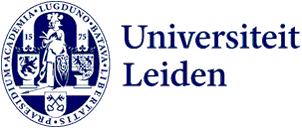
How do we listen? 'There is no such thing as a natural disposition'
How is our perception of sound informed by the way we participate in the world? That is the question PhD candidate Gabriel Paiuk has been pondering in recent years. 'The way we experience sound is informed by material, technical and collective conditions that influence our interaction with the environment.'
'We experience different sounds in different ways ' Paiuk begins. 'If you hear a lion, you run. If you hear a flute, you sit down and enjoy the music. Mechanisms like that have been studied many times, but always with an emphasis on the individual listener. I am more interested in the collective conditions that inform how we get to listen in different ways. What is there about that experience that is nurtured by our own culture? How are we influenced by the technologies we use?
Whereas running away at the roar of a lion might still be considered a natural reaction, many of our other responses to sound are developed as part of specific contexts, Paiuk argues. 'For example, we learn to recognise how a microphone as sounds as we’ve become used to listening to a radio or other more contemporary devices,' he explains.
Understanding the world around us
That understanding of different types of sound affects the way we experience the world around us. 'Sound lets you know, for example, how big the space around you is,' says Paiuk, 'but you become aware of the space around you in a different way when you hear a slamming door than when you hear a chirping cricket. As an artist, I was always interested in how material and technical aspects of sound play a role in how our perception occurs. This PhD track gave me a chance to explore this more in depth.'
To do that, Paiuk elaborated a new concept of ‘sound image’ based on the theory of the image developed by the French philosopher Gilbert Simondon. 'When we think of an image, our first thought is of a static thing, but Simondon describes it as a node in a cycle that is constantly unfolding. This made it suitable for me to analyse how what we hear changes due to the circumstances in which it takes place. In the same way that a visual image enables somebody to be aware of a reality beyond themselves, the sound image produces such awareness in aural terms. I have addressed how different audibilities are produced as we inhabit the world in different ways and as this takes part in different cultural frameworks and cosmologies.'
Due to the selected cookie settings, we cannot show this video here.
Watch the video on the original website orArtist and PhD candidate
As an artist and PhD candidate at ACPA, Paiuk is incorporating these findings not only into a written dissertation, but also into a series of sound art works. 'I am more nervous about that than about the defence,' he says. 'The work involves a lot of technology, so there are many components to deal with.'
If all that goes well, Paiuk wants to expose in these works how technology and the ways it is used shape the ways in which we hear. 'In one of the works, I uncouple the aural and visual layers of cinema and also deal with a variety of sensitive forms of experiencing sound: from a vague distant impression to an almost tactile tickling in the ears. I do this to explore how our perception relies on certain forms in which technology is used. When I challenge this, I aim to explore the role of our listening habits in shaping the way we engage with the world around us.
